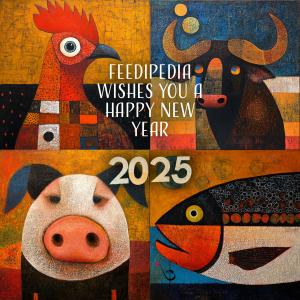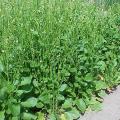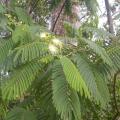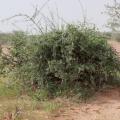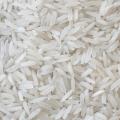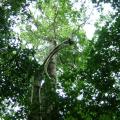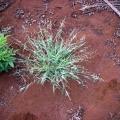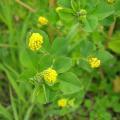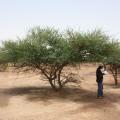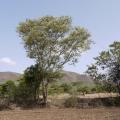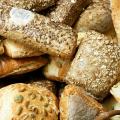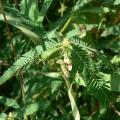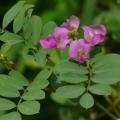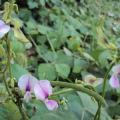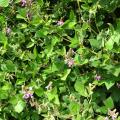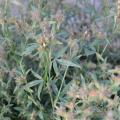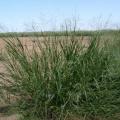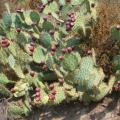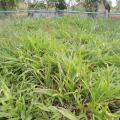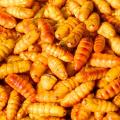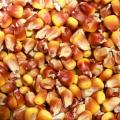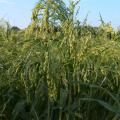Explore Feedipedia
|
Crambe (Crambe abyssinica Hochst. ex R. E. Fr.) is a cruciferous oil plant that... Read more |
Chinese albizia (Albizia chinensis (Osb.) Merr.) is an almost evergreen... Read more |
Cadaba (Cadaba farinosa Forssk.) is an evergreen shrub found in Africa that is... Read more |
|
Polished rice (Oriza sativa L.) results from the complete milling of rice grain... Read more |
The breadnut tree (Brosimum alicastrum Swartz) is a tree mostly grown in Central... Read more |
Blue signal grass (Brachiaria leersioides (Hoschst.) Stapf) is an annual grass... Read more |
|
Black medic (Medicago lupulina L.) is a creeping annual legume from temperate... Read more |
Black-hooked acacia (Senegalia laeta (R.Br. ex Benth.) Seigler & Ebinger,... Read more |
Black cutch (Senegalia catechu P.J.H. Hurter & Mabb., formerly known as ... Read more |
|
Bakery wastes are products obtained from the recycling of bakery and viennoiserie... Read more |
American jointvetch (Aeschynomene americana L.) is an annual tropical legume... Read more |
Ahuhu (Tephrosia purpurea (L.) Pers.) is a multipurpose tropical legume mainly... Read more |
|
Tropical kudzu (Pueraria phaseoloides (Roxb.) Benth.) is a vigorous, dense-... Read more |
Greenleaf desmodium (Desmodium intortum (Mill.) Urb.) is a large perennial (... Read more |
Stylo (Stylosanthes guianensis (Aublet) Sw.) is a tropical legume shrub widely... Read more |
|
Coloured Guinea grass (Panicum coloratum L.) is a tufted (erect, geniculate or... Read more |
The prickly pear (Opuntia ficus-indica) is a cactus species widespread in... Read more |
Congo grass (Brachiaria ruziziensis Germ. & Evrard or Urochloa... Read more |
|
Silkworms are the caterpillars of moth species raised for silk. 90% of the world... Read more |
Maize (Zea mays L.) is a major staple food grain throughout the world,... Read more |
The proso millet (Panicum miliaceum L.) is a cereal plant cultivated for its... Read more |
Pages
Recent resources
 Opinion paper: Phasing out of the aid provided to the livestock sector during expectedly recurrent emergencies
- Makkar, 2024. animal
Opinion paper: Phasing out of the aid provided to the livestock sector during expectedly recurrent emergencies
- Makkar, 2024. animal
Open access opinion paper that makes a case that the emergency aid do more harm than good to African countries. It is valid for all the fields of agriculture but has direct consequence for animal agriculture. The context here is the aid provided during emergencies that are foreseeable recurrent.
The role of livestock in food security, poverty reduction and wealth creation in West Africa
- Molina-Flores et al., 2020. Food and Agriculture Organization of the United Nations Accra, 2020
Livestock is key to 377 million people in West Africa and in some countries, up to 60% of the population is involved in livestock production. The demand for animal products is increasing with population growth, urbanization, growing middle class, and due to shifting consumer preferences towards animal products. To meet this growing demand, countries in West Africa must engage in accelerated sustainable livestock production undertaking. Livestock development is key to eradicate hunger and poverty. This book attempts to provide up-to-date, and reliable information on the potentials, opportunities, and challenges of the livestock subsector in West Africa.
Pulses and their by-products as animal feed
- Sherasia et al., 2017. In: Calles, T.; Makkar, H. P. S. (Eds), FAO, Food and Agriculture Organization of the United Nations, Rome, Italy
This document provides a state-of-the-art review of the recent research (published and unpublished) on the use of pulses and their by-products as animal feed. It aims at raising awareness on the use of pulses and their by-products. It highlights the nutritional role of pulses and pulse by-products as animal feed and is a contribution to the legacy of the 2016 International Year of Pulses. This document will further enhance the use of these feed resources in other continents, besides Asia, where many pulse by-products are simply dumped. It is also expected that the synthesis presented contributes to make the use of pulses and their by-products as animal feed more efficient. This document will be useful for extension workers, researchers, feed industry, policy-makers and donors alike.








